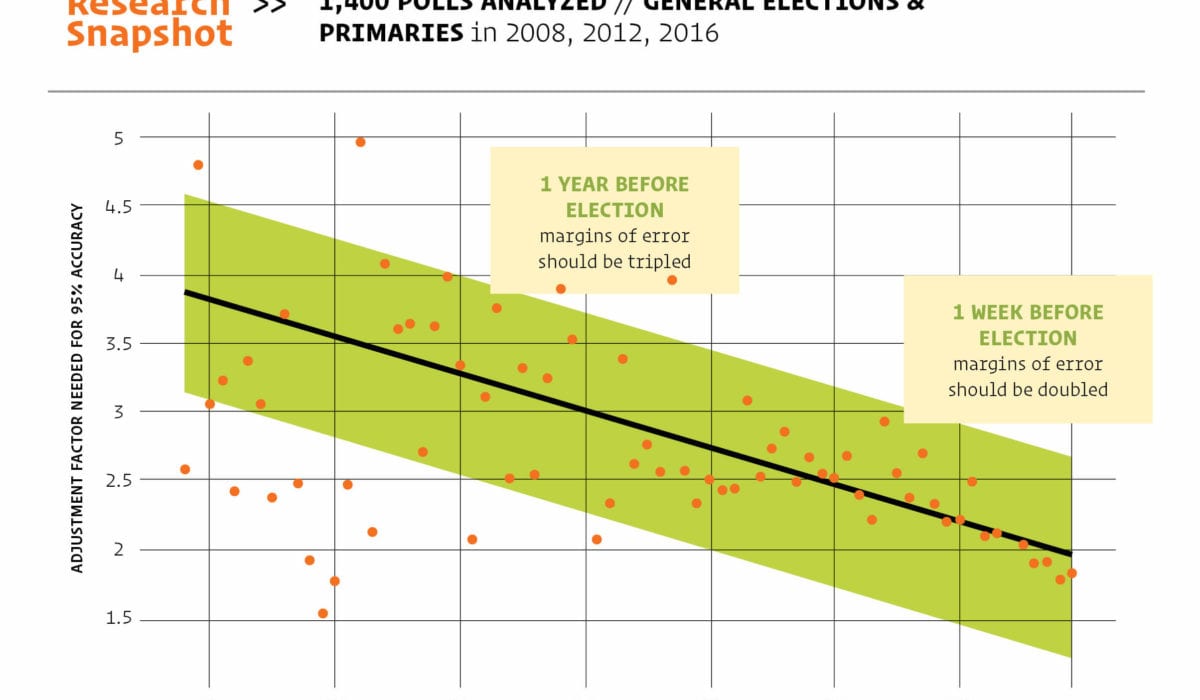Just how accurate are election polls?

Public confidence in election polls plummeted after Donald Trump beat Hillary Clinton in 2016 despite trailing her in the polls. Even so, horse race-style coverage of the latest polls continues to dominate election news cycles.
A recent Berkeley Haas study suggests that election poll accuracy hasn’t actually declined. Rather, it was never as accurate as pollsters claimed.
Most election polls report a 95% confidence interval. Yet an analysis of polls from 11 election cycles dating back to 2008 found that the outcome lands within the poll’s result just 60% of the time. And that’s for polls just one week before an election—accuracy drops even more further out.
A 95% confidence interval means that if the same sampling procedure were followed 100 times, 95 of those samples would reflect the true voter population. These statistical “sampling errors,” however, do not include errors and unknowns, such as surveying the wrong set of people.
“There are many reasons why an actual outcome and poll could differ, and the way pollsters compute confidence intervals doesn’t take those issues into account,” says Prof. Don Moore, who conducted the analysis with Aditya Kotak, BA 20 (computer science and statistics).
“Perhaps the way we interpret polls as a whole needs to be adjusted to account for this uncertainty,” Kotak says.

In order to be 95% accurate, pollsters need to greatly increase the margins of error they report.

Most polls ask, “If the election were held today,…” yet accuracy declines the further from an election the poll was conducted.